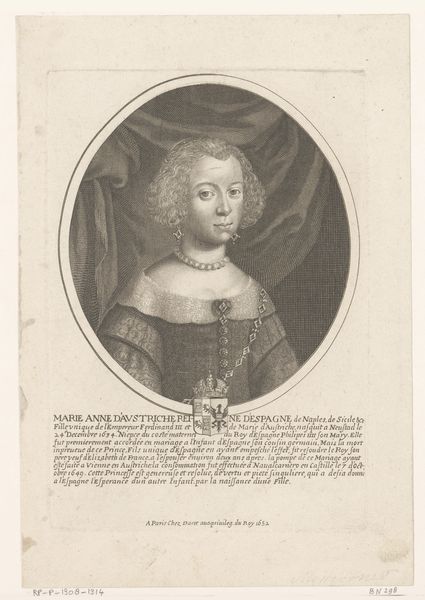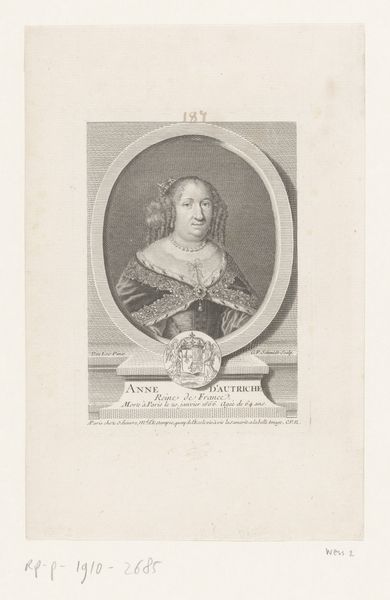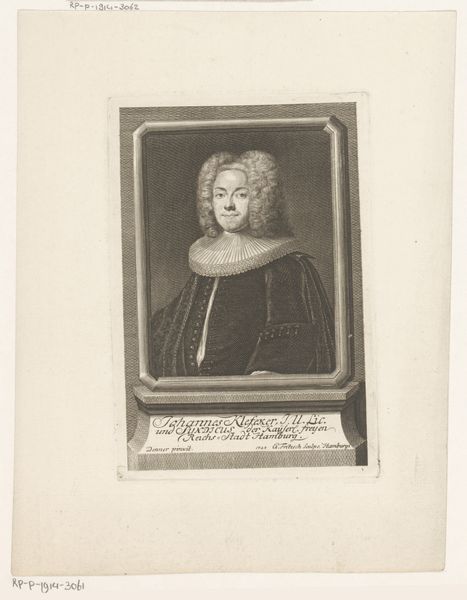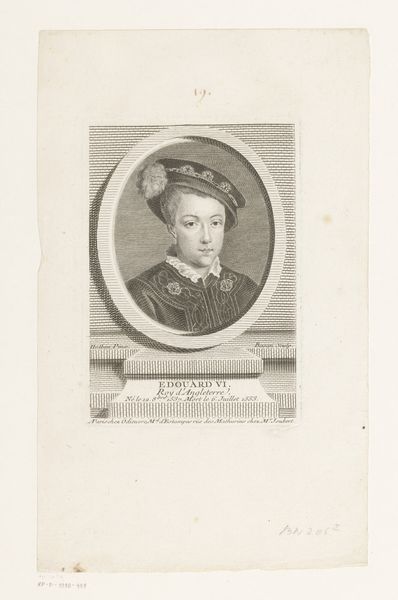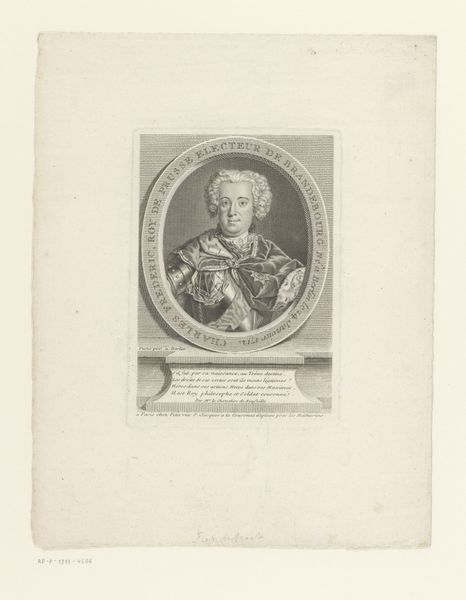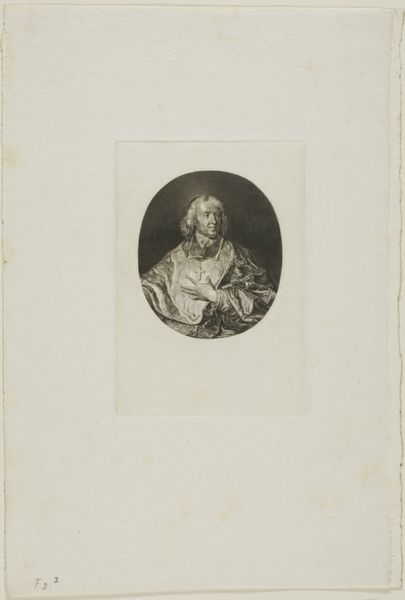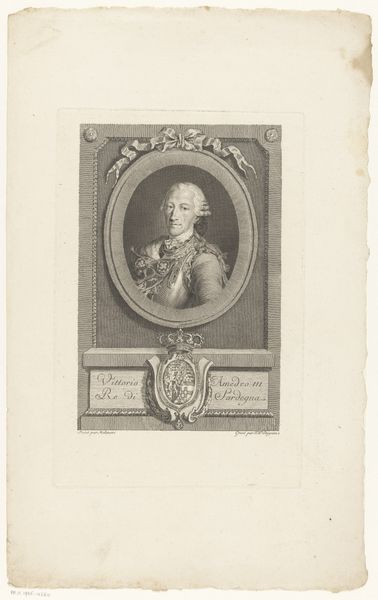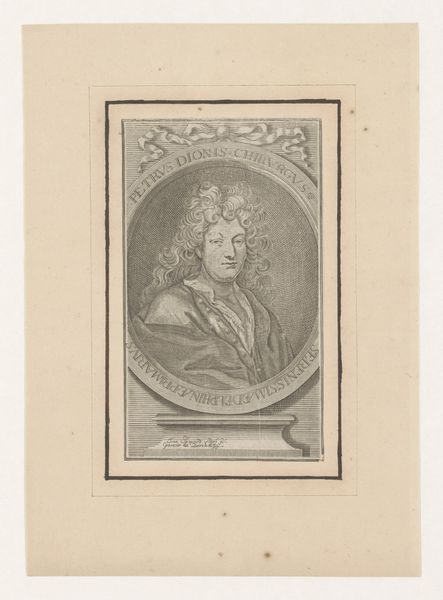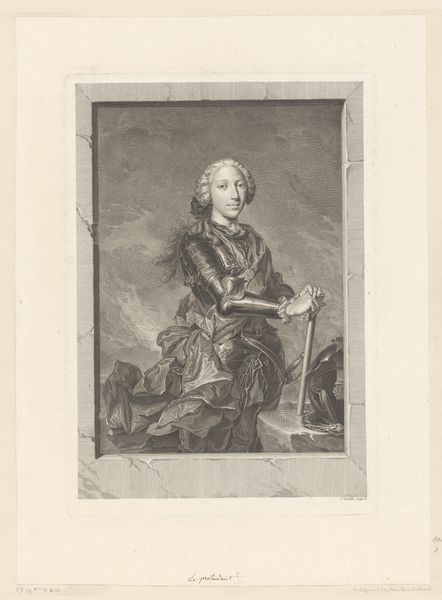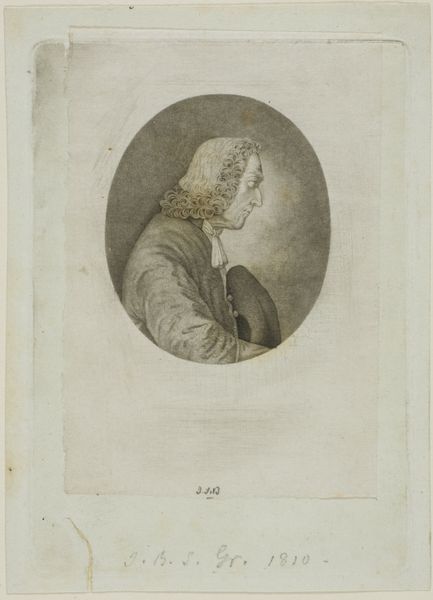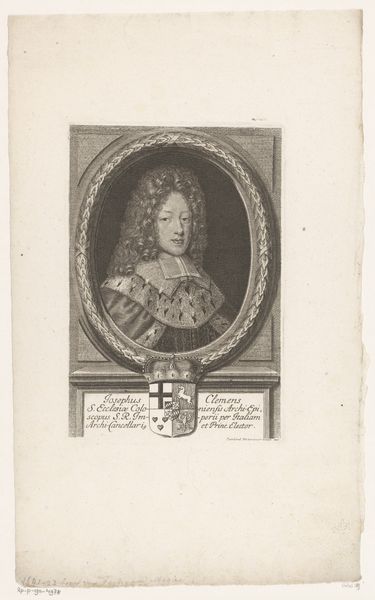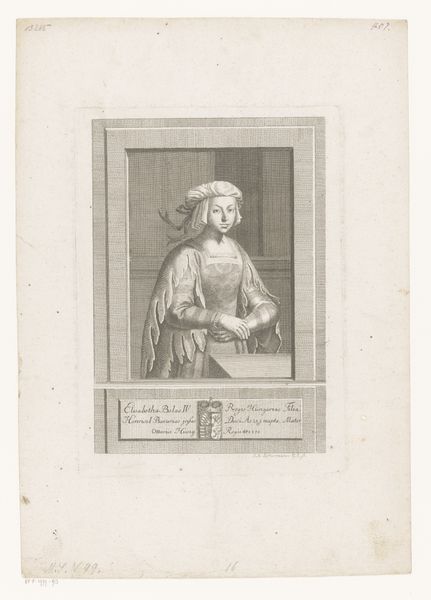
print, paper, engraving
#
portrait
#
baroque
# print
#
paper
#
history-painting
#
engraving
#
monochrome
Dimensions: height 149 mm, width 103 mm
Copyright: Rijks Museum: Open Domain
Curator: This monochrome engraving from 1686 by Etienne Picart captures Marie de Lorraine, a prominent figure in French history. There's a real stoicism in her expression, don't you think? Editor: Absolutely. It's almost austere. The oval frame containing her portrait makes it seem as if she's peering out from another era. What's striking, to me, is the detail achieved within the limitations of the engraving technique. You can almost feel the weight of her velvet gown. Curator: It’s fascinating to see how printmaking elevated individuals, distributing images of the elite throughout society. This was about solidifying status and disseminating a carefully constructed image. Editor: You're spot on. Consider how the Baroque style here—characterized by that precise detail, the texture rendered—served power. These weren’t just images; they were pronouncements. And that inscription below? It reinforces her lineage and noble attributes. Curator: Indeed. Look at the slight upturn of her lip—a hint of self-assurance, wouldn't you agree? Despite the formal context, Picart manages to hint at her personality, doesn’t he? It's as if she's a character in her own, carefully curated play. Editor: The “theatricalization” of power. Engravings like this allow us a glimpse into the image-making machinery of the French aristocracy. The way power was visually constructed and then circulated, performing a role for the elite. Curator: And think of its ripple effect, Editor. Each viewing reinforcing those notions of hierarchy and grace. So much history embedded within these lines. Editor: Absolutely. Every choice – the framing, the font – contributed to the social and cultural environment where power was visual and permanently defined, to some degree, by its image. It still does, of course, and these objects help us trace the beginnings of such notions.
Comments
No comments
Be the first to comment and join the conversation on the ultimate creative platform.
